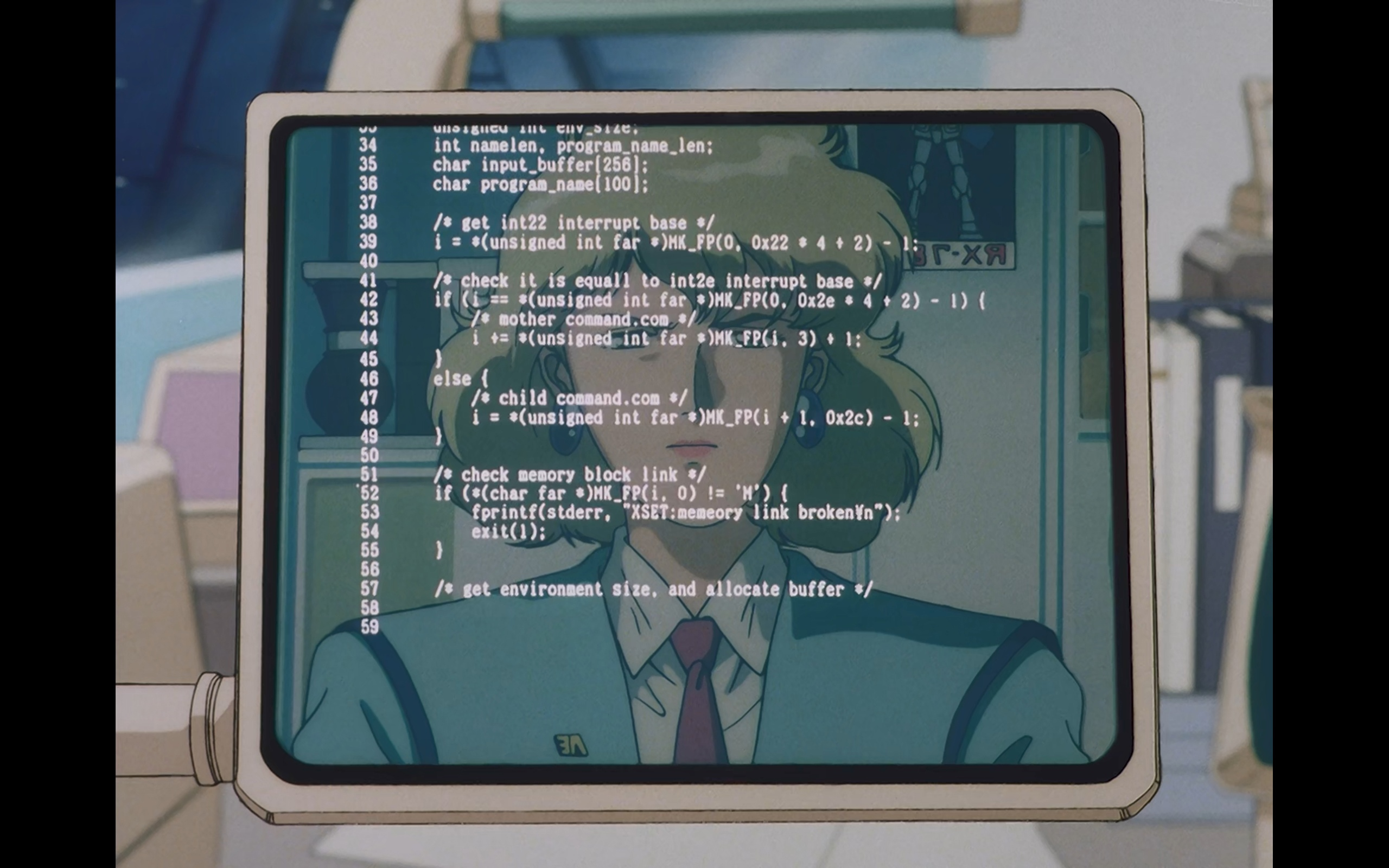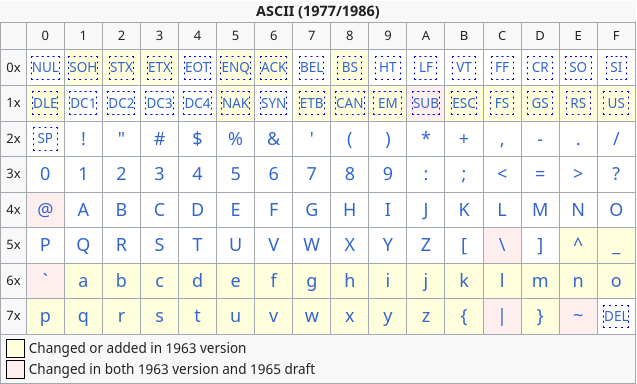Gundam With Decent Portrayal of Code
August 27, 2025
Years ago I encountered a Reddit post asking us redditors to rate a piece of code shown in Mobile Suit Gundam 0083: Stardust Memory. This led to an interesting discussion and analysis of the code from a few redditors, particularly the analysis from gralamin who disected the code revealing a few interesting aspects of the code such as the potential architecture, OS, and purpose of the code.

Based on the release date of the anime along with the provided code, we can infer the following:
- Code is written for x86-16-bit DOS based on
- the use of far pointers
- reference to the DOS Command-line interpreter COMMAND.COM, the precursor of cmd.exe
- There is some IPC (Inter-process communication) going on whereby there is a parent process (named mother) and a child process
- NOTE: COMMAND.COM runs programs in DOS
- DOS system was set for Japanese locale using JIS X 0201 as their characterset
When I initially saw the post 3 years ago, I initially thought broken¥n was a typo seeing how there was a few spelling mistake in the document such as equall and memeory. However,
as gralamin alluded:
I’m not sure what is up with the yen n. Maybe at the time \ was mapped to yen on japanese machines, in which case this would be a new line.
After spending hours reading up on character encoding due to a request from a friend studying Linguistics, I now can confirm his speculation was indeed correct.
From the ASCII table, we can see that 0x5C maps to backslash \n

ASCII Table. Extracted from Wikipedia
JIS X 0201 can be seen as an extension of ASCII where the upper unused bits were repurposed to contain Katakana characters and a few other things. However there are some slight differences as highlighted in yellow:

JIS X 0201 Table. Extracted from Wikipedia
As one can notice 0x5C no longer maps to baskslash \n anymore but rather to the Japanese Yen ¥. This makes no difference to the compiler’s perspective as from its perspective
as \ and ¥ has the same value. Wikipedia has a good comment about this effect:
The substitution of the yen symbol for backslash can make paths on DOS and Windows-based computers with Japanese support display strangely, like “C:¥Program Files¥”, for example.[14] Another similar problem is C programming language’s control characters of string literals, like printf(“Hello, world.¥n”);.
Whether intentional or not by the artist, this rendering shows some realism in the show (let’s ignore the fact the female lead is not Japanese).